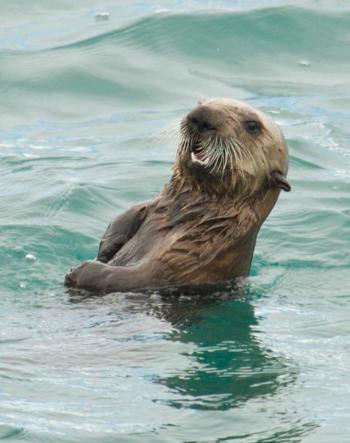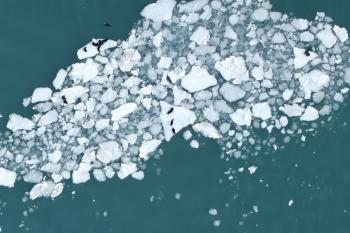BOEM Alaska sponsors study to make otter counts faster, safer and less obtrusive
By John Callahan
BOEM Alaska Region
ANCHORAGE, Alaska – One of Alaska’s largest funders of marine science, BOEM’s Alaska OCS Region is testing a new approach to studying sea otter populations. The approach uses an AI-powered technique that promises to be safer, more efficient and less visible to the otters themselves.
A member of the weasel family, the sea otter (Enhydra lutris) is a familiar sight to residents of the southern coasts of Alaska and the Aleutian Islands. Alaska is thought to be home to about 90 percent of the world’s sea otters, which are considered a “keystone species” that, by preying on sea urchins, allow kelp forests to flourish. Those forests, in turn, provide food and habitat for many other marine organisms.
But the history of the sea otter has been a precarious one. Between the 1740s and the early 1900s, fur traders devastated their population, until at one point there are believed to have been only one to two thousand remaining individuals. Their recovery since then has been more or less successful, although in some areas they remain rare and their overall numbers uncertain.
“Until now, our way of counting otters left a lot to be desired,” said Dr. Christina Bonsell, a marine ecologist with BOEM’s Alaska Region. “Otters aren’t that big, and from the air often just look like driftwood or other debris. So to get a good count, we’d have observers fly these small planes overhead, sometimes as low as 300 feet, to try to get a good look. Our goal here was to develop a way to count otters that was safer, more cost efficient and less obtrusive to the otters.”
For the last few years, Bonsell has been coordinating a study to determine the effectiveness of a new approach. Instead of human observers, the planes carry an array of cameras, which fire away steadily as the plane flies along predetermined transects. Following the flight, those images are stitched together by software. An AI program — dubbed “See Otter” — having been taught, in effect, what an otter looks like, then analyzes the photos, flags sightings and comes up with a preliminary count. Those sightings are then verified by a human expert.
“We’ve been experimenting with a similar approach with whales for the past few years,” Bonsell said. “A camera, backed with AI, has some advantages over a human observer. It’s really good at analyzing large amounts of imagery. It doesn’t get tired, or bored, or distracted as the plane flies along hour after hour. Of course we always want to verify the results. But it’s important to monitor our otter populations, and we think this approach holds a lot of promise.”
The study is currently restricted lower Cook Inlet, in Southcentral Alaska. If the approach is successful, Bonsell said it would be reasonable to expect it to be rolled out on a wider basis, potentially as far as the southern end of their range, on Mexico’s Baja California Peninsula.
The study is being conducted in conjunction with the U.S. Fish and Wildlife Service, the U.S. Geological Survey and the National Park Service. The results of the study, titled “Quantifying Sea Otter Abundance, Distribution, and Foraging Intake in Cook Inlet, Alaska,” are expected to be published in the fall of 2024.



